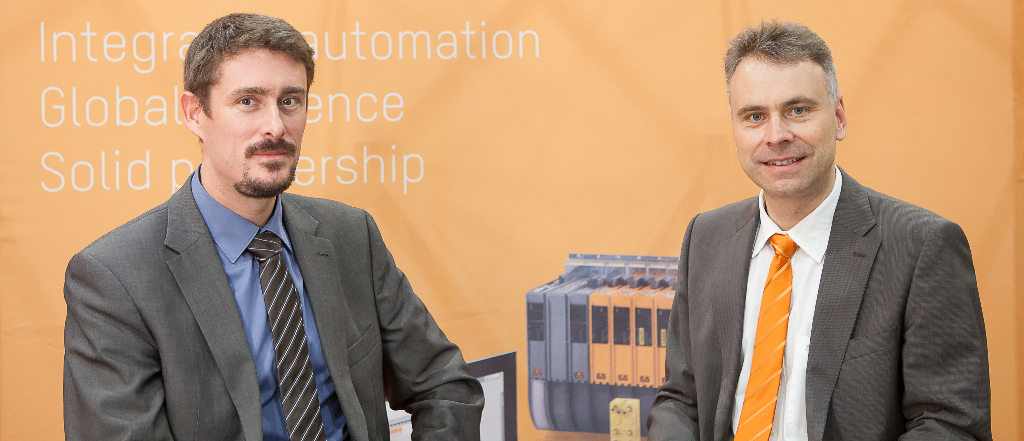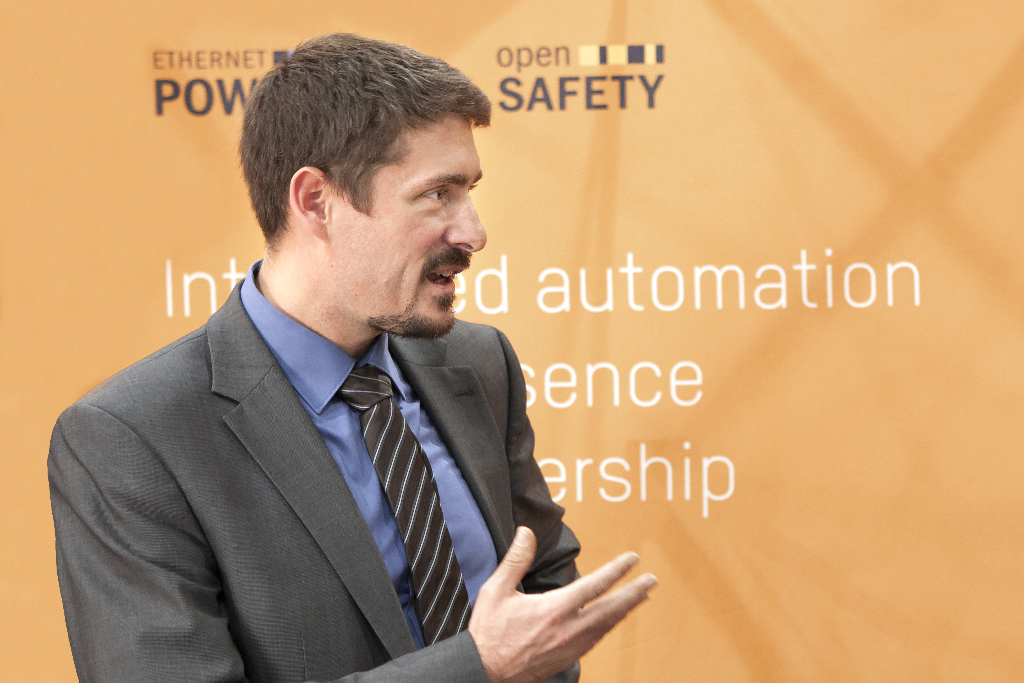Industry 4.0 is transforming manufacturing systems – both the equipment involved and the way it is developed. What new challenges and opportunities will accompany this trend? That's what we wanted to find out from Dr. Michael Kreis, vice president of R&D at Kaltenbach and Markus Sandhöfner, general manager of B&R Germany.

Dr. Kreis, do your customers request "Industry 4.0 machines"?
Kreis: We do have customers who explicitly request Industry 4.0 machines, and we have many others who request specific qualities and features of cyber-physical systems. When you look at the requirements specifications, the concept of integration is playing an increasingly prominent role. Every machine in a factory has to dovetail with the existing infrastructure. Our customers therefore need machines that are able to communicate with each other as well as with ERP and MES systems. They want to collect operating data and view it on mobile devices. Remote maintenance is also key, so they can do things like update their software without having to put a technician on site.
How do these requirements affect the way you develop your machines?
Kreis: Industry 4.0 has already made a lasting impact on the way machines are developed. Just five years ago, different software developers were still writing subprograms that communicated with each other over a proprietary protocol. Today, this communication has to follow well established standards. If there is one thing that is clear, after all, it is that every link in the production chain needs to work harmoniously with all the others. In conjunction with IT systems, that kind of interconnectedness opens up exciting new possibilities. Just think about how the Internet has changed our personal lives.
Mr. Sandhöfner, where does automation fit into this picture?
Sandhöfner: In an integrated manufacturing system, open technology is essential to enabling consistent communication. At the same time, the machines need to adapt responsively to different products. In practice this means a substantial increase in servo technology to make them more flexible. It also means more lines of code, since so many of a modern machine's functions are implemented in software form. And, at the end of the day, the operator needs to be able to handle the machine – regardless of how complex it is. Our job as the automation provider is therefore to offer machine builders optimal support in all of these areas. They need to have the automation solution implemented as efficiently as possible so they can focus their creative energy on making their machines more competitive.
Dr. Kreis, what makes new Kaltenbach machine competitive?
Kreis: It needs to do more than other machines, but it mustn't cost more. That may sound rhetorical, but it's a fact. The increasing pressure of global competition can be felt throughout our industry. The way we position ourselves strategically is through our ability to offer added value that gets customers excited about our machines. So, advanced functionality is the core requirement of every machine we build, and to get there we need to use every tool in our toolbox. Like Markus says, we're talking primarily about software, because reinventing the gear wheel will only get you so far.

What kind of challenges does that present for your development team?
Kreis: We have to implement much more functionality in the software then we used to. At the same time, we can't just keep adding developers. So we have to manage the resources we have more efficiently – through concurrent engineering and making sure the various teams are properly networked. In terms of efficiency, what's important is that we have our developers working on key features that make our machines unique. They shouldn't tied up with programming the thousandth servo controller. For repetitive tasks like that, we instead use ready-made components that are created, maintained and updated by our partner B&R. That gives us functionality that we can absolutely rely on.
Sandhöfner: Over the lifecycle of a machine, approximately 70% of the software costs go toward maintenance. OEMs dedicate more than half their development time just to maintaining existing functions – an activity that their customers do not pay them for.
When it came time to develop an innovative metal processing machine that performs cutting, drilling and milling in parallel, you elected to use mapp Technology. Why?
Kreis: The KDH 1084 has more CNC axes than any machine Kaltenbach has ever built. We were also looking at a very ambitious project schedule, with only three months to program 20 CNC axes. That was only possible using ready-made components. Of course, the time we would save maintaining the software over the lifecycle of the machine also played a decisive role.
What would your developers say about the project if we asked them?
Kreis: In fact, I did ask them about their experience with mapp. Their answer? "We couldn't have done it without mapp." Our guys have really noticed the time it saves them. And we're not talking about shaving off 5% or even 10% – we're talking about at least tripling the speed of development. Looking back on the project, we are unanimously happy with our decision. Another thing that helped us were the extensive machine simulation options that B&R provided at no extra charge, and which required no extra hardware. By testing early on with the development PC we were able to minimize the time we needed for commissioning.
Mr. Sandhöfner, B&R presented mapp Technology at last year's SPS IPC Drives event in Nuremberg. What kind of feedback have you gotten from customers in the meantime?
Sandhöfner: mapp is already being used to develop machinery and equipment in around 200 applications worldwide. The feedback has been overwhelmingly positive, and extends to other aspects of our solution as well. mapp provides developers with a framework that allows them to work considerably faster, while also simplifying software maintenance. At the same time, B&R's Scalability+ gives them ultimate flexibility by decoupling the machine's software from its hardware and allowing it to be programmed independently. Our customers enjoy the same flexibility with our hardware portfolio, which ensures that they are always free to pick the solution that best fits the application at hand. Taken together, what all of this means for our customers is an immense competitive edge.
What is it that matters most?
Sandhöfner: What matters most is their ability build machines that stand out from the competition. Like Michael said, it's about differentiating their machines through advanced functionality and performance. To do that, however, their developers need time. We free up the time they would otherwise spend implementing basic functionality by providing standardized modules that have proven themselves thousands of times in the field. Our customers are able to concentrate on creating added value for the end user and distinguishing themselves from the global competition.
If you had to sum up mapp's benefits in one sentence, what would it be?
Sandhöfner: mapp allows our customers to focus on what matters most.
What news can we expect regarding mapp at this year's exhibition?
Sandhöfner: Specially for the food and beverage and packaging industries, we've worked together with OMAC to develop the mapp PackML component. B&R is the first technology provider in the world to offer a standardized interface for both factory-level and machine-level communication. Other mapp components currently in development will allow operators to make configuration and software changes at runtime conveniently via the HMI screen, simplify human-machine interaction in general and support developers with additional technology functions. By early next year we will have doubled the selection of mapp components.
Efficient and ergonomic steel profile production
Conventional cutting and drilling machines for steel profiles have been plagued by downtime, because only one of the processes can be active at a time. Kaltenbach has developed a new machine that, for the first time, performs 3 processes in parallel: cutting, drilling and milling. The new design boosts productivity by 30 to 80%.
To write the application software, Kaltenbach's developers relied on mapp Technology from B&R. In only 3 months, they developed a working drive solution for machine variants with up to 40 axes.
The machine's modular design allows it to be adapted flexibly to the needs of end users. The HMI is intuitive to navigate, and its ergonomic design allows operators to work fatigue-free.

